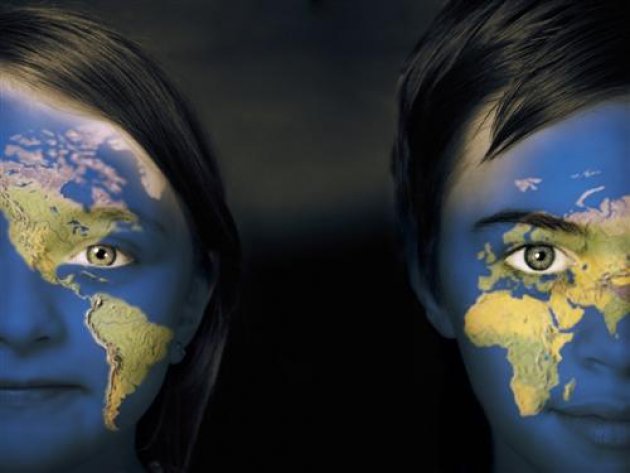The Third Place

Nora Kusaka Herrero gets a kick out of answering questions about where she’s from.
And it’s not hard to understand why. It's a mouthful for grade 10 Concordia International School student to explain her family’s interesting international roots: Nora was born in Chicago, her mother is from Puerto Rico, her father is Peruvian-Japanese, and now, her family lives in Shanghai.
At the same time, she doesn’t see it as being extraordinary, especially in this city. “I don’t see (my background) as much of an advantage in any way,” she says. “In international schools, there’s so many different nationalities, a lot of students are like this.”
Nora, like so many expatriate children in Shanghai, is the perfect example of a “third-culture kid”, a term coined in the 1960s by sociologist Ruth Hill Useem, who conducted research on North American children living in India.
“If (third-culture kids) go back to their home country, or the place where their parents are from, they can say this is where they’re from, but they might not necessarily feel it."
The idea is that many children who accompany their parents into a different culture have to integrate aspects of their birth (or first) culture and their second, new culture – creating a unique “third culture.”
What is also commonly seen with third-culture kids is that they feel they have more in common with each other than with peers from their home country who have not had internationally mobile experiences.
Part of the challenge, especially for third-culture teenagers, is that many have difficulties figuring out their own identity, says Melinda Weber, a counsellor at Community Center Shanghai and a former school counsellor at SMIC Private School.
“Kids often figure out their identity by identifying with their home culture. So if you don’t have one, it can be very hard,” Weber says. “If (third-culture kids) go back to their home country, or the place where their parents are from, they can say this is where they’re from, but they might not necessarily feel it. Kids in their teenage years already have a hard time figuring themselves out, but if they have nothing to hold on to, it makes it even harder.”
Margie Gibson, a second grade teacher at the British International School, in Pudong, agrees, and describes how many of her students even have problems picking a country to call home.
“I always say to them, where do you go home to in the summer? Where are your grandparents? Where are you going to study? Which home are you going to return to? It can be very difficult,” says Gibson, who has also taught expatriate students in the UK, Singapore and Australia.
One way to help foster a sense of belonging among third-culture kids is to provide them with opportunities to talk about their heritage and home countries.
“For ‘Show and Tell’ this week, each of my students talked about a famous person from wherever they call home,” Gibson says. “One student from England talked about the Beatles, and another child talked about Edmund Hillary, a famous mountain climber from New Zealand. It’s important to give third-culture kids a chance to create these connections.”
Another issue, particularly for children with parents from two different countries, is that third-culture kids may have to juggle multiple languages and cultures. For example, a child attending one of Shanghai’s international schools, with parents from Germany and China, would likely have to manage different traditions, value systems and languages.
"In their teenage years, third-culture kids grow up a little faster because they feel they’ve seen so much more of the world"
At the same time, many third-culture children benefit from the opportunity to become multi-lingual and gain a strong global perspective.
This also tends to help them mature more quickly, says Weber. “In their teenage years, third-culture kids grow up a little faster because they feel they’ve seen so much more of the world, and they have a more mature outlook because they have a broadened perspective.
“When they’re adults, many don’t feel they have to be tied down to one particular country, and they’re more likely to take jobs that require them to travel.”
And Nora’s family – who moved from Tokyo to Shanghai looking for a new adventure – has seen many advantages with their travelling household.
“I’ve sort of grown up different from all my friends back in the US,” says Nora. “Because of my dad’s Japanese roots, we take off our shoes when we go inside the house. I also had this friend who only ate pasta, salt and butter, and white bread with jam and butter – nothing really adventurous. But when we were growing up, my parents cooked all kinds of different meals.”
Her mother, Silvia, says that her daughter’s mixed background and travels have made her more flexible and open-minded.
“She explores, welcomes differences and her mind isn’t frozen to do just one thing,” she says.
“I think as parents of third-culture kids, you have to stay true to yourself. Define what you think is important and make it non-negotiable. That way, your children can feel there’s a foundation to who they are.”
